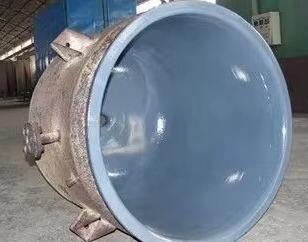Nowadays, the efficiency and cost-effectiveness of industrial operations are influenced by how long the equipment lasts. One of the most effective methods of preventing corrosion is the application of anti-corrosion coatings. This article explains the anti corrosion industrial coatings technology, their application and importance.
Understanding corrosion and its impact on industrial equipment
Corrosion is the deterioration of materials such as metals that occurs due to environmental factors like moisture, chemicals and oxygen. In industrial context, this can lead to equipment failure, maintenance costs, and safety risks. In the current economy, where operational cost is on the rise, efficient management of corrosion is needed.
The role of anti-corrosion coatings
Anti-corrosion coatings form the first line of defense by acting as barriers to the metal surfaces. These coatings are formulated with various materials, including epoxies, polyurethanes, and zinc-rich paints, each offering unique protective properties. These coatings extends the equipment’s lifespan by preventing moisture and chemicals from coming into contact with the substrate.
Benefits of Anti-Corrosion Coatings
-
Extended Equipment Lifespan: A major benefit of the lifespan of industrial equipment is significantly improved with the application of anti-corrosion coatings. These coatings eliminate the need for frequent repairs and replacements by stopping rust and corrosion.
-
Cost Efficiency: With the protective anti-corrosion coatings, the protection required for industrial equipment results in lower maintenance and repair costs. Consequently, finances for the company are spread out over a multitude of areas.
-
Enhanced Safety: Workers are put at risk with structural failures, and anti-corrosion coatings provide protection by avoiding these failures and thus providing a safeguard with the coatings.
-
Environmental Protection: A great number of anti-corrosion coatings are designed with an emphasis on being eco-friendly, providing protection to the affected ecosystem while safely guarding industrial equipment.
Choosing the Right Anti-Corrosion Coating
Making the selection of the appropriate anti-corrosion coating is a decision that has to be made with regards to numerous issues such as the metal in question, the environment of operations, and the nature of the corrosive chemicals in question. For instance, in marine situations, the coatings required have to enable exposure to salt water while industrial situations with chemical exposure need the protective anti-corrosion coatings to be specially formulated.
Changes and Innovations in the Industry
An increase in sustainability and performance has spurred new trends and innovations in the anti-corrosion coatings market. A new era in eco-friendly solutions is driving the creation of protective coatings which lack dangerous solvents and heavy metals, while innovations in nanotechnology are producing coatings with thinner, yet stronger layers.
As technology evolves, new anti-corrosion coats will be created that are more effective than those available today. Since anti-corrosion coatings help protect industrial machines, the ability to keep technology up to date will be more readily available. The market and technology will continue to improve, making the anti-corrosion coats of the future the most innovative yet and enabling the equipment to receive unparalleled protection.
Industry Trends and Innovations
The protective anti-corrosion coatings market is witnessing a rise in trends and innovations that aim to improve performance while remaining eco-friendly. The evolution of eco-friendly solutions while focussing on the reduction of harmful solvents and heavy metals is spurring new developments, as are the evolution of nano-coatings and the new diversity of high-strain protective coatings.
The balance of performance, extraction and price will continue to improve in the near future making anti-corrosion segments a more reliable protective resource. The ability to preserve and protect industrial equipment will be made effortlessly and ensuring up to date technology will remain efficient and available.

